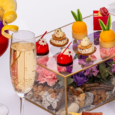You’re watching an episode of the newest Korean drama that’s piqued your interest at the moment. On your screen, you watch a character you love sit at a restaurant and pour themselves one shot glass after another of alcohol straight from a bright green bottle. You recognize that bottle–you would anywhere. It’s the very same bottle that has provided comfort in their moments of sadness. It’s what gives liquid courage to almost every lead character to confess their feelings in a drunken stupor. It’s there in every celebration, in every heartache, and in every after-work wind down.
It’s none other than soju.
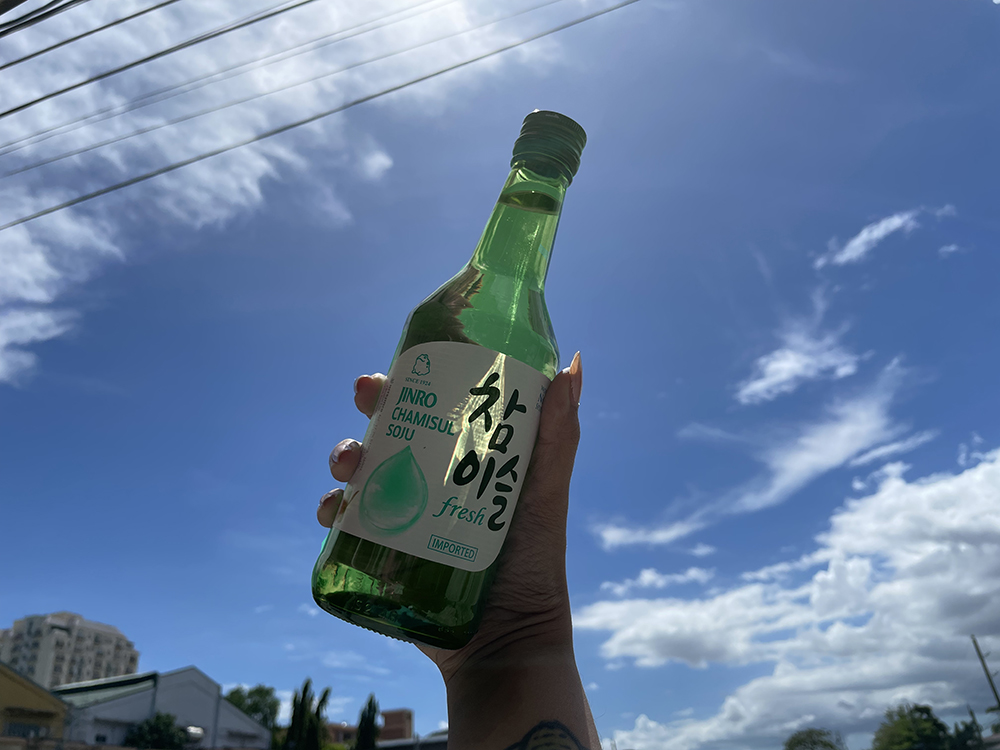
Photo by Angeline Rodriguez
Soju has been around for centuries and is increasingly gaining popularity day by day thanks to Korean pop culture. It currently holds the title of being the best-selling liquor in the world by volume, with Jinro being the most popular brand.
But what is soju and why do people love it so much?
What is soju?
Soju is often compared with vodka for having a clear and neutral flavor but with less alcoholic content. Most commercially sold soju nowadays are notably sweet and come in a variety of flavors, like Jinro’s strawberry, green grape, grapefruit, and plum soju, making it a great liquor to consume on its own or mixed with other drinks to create refreshing cocktails.
But with soju being the most popular booze in the world, there is a risk that soju drinkers face that they might not be completely aware of. If you’re not careful, that bright green bottle you’re purchasing online and having delivered to your home could actually be fake.
Fake soju exists?!
Alcohol counterfeiting is relatively rampant in the country. Unfortunately, soju is not safe from generating its own line of fakes and posers. It’s becoming more difficult to determine if what you’re buying is authentic or not. Counterfeits will take advantage of unsuspecting customers and fill up bottles that are packaged in the same exact way as the original drink with cheaply made, lower-quality alcohol.
Consumption of fake alcohol could be dangerous and have health risks. So before you twist off the cap of that soju for your drinking session, here’s a list of things you need to check to ensure its safety:
How to tell if your soju is authentic
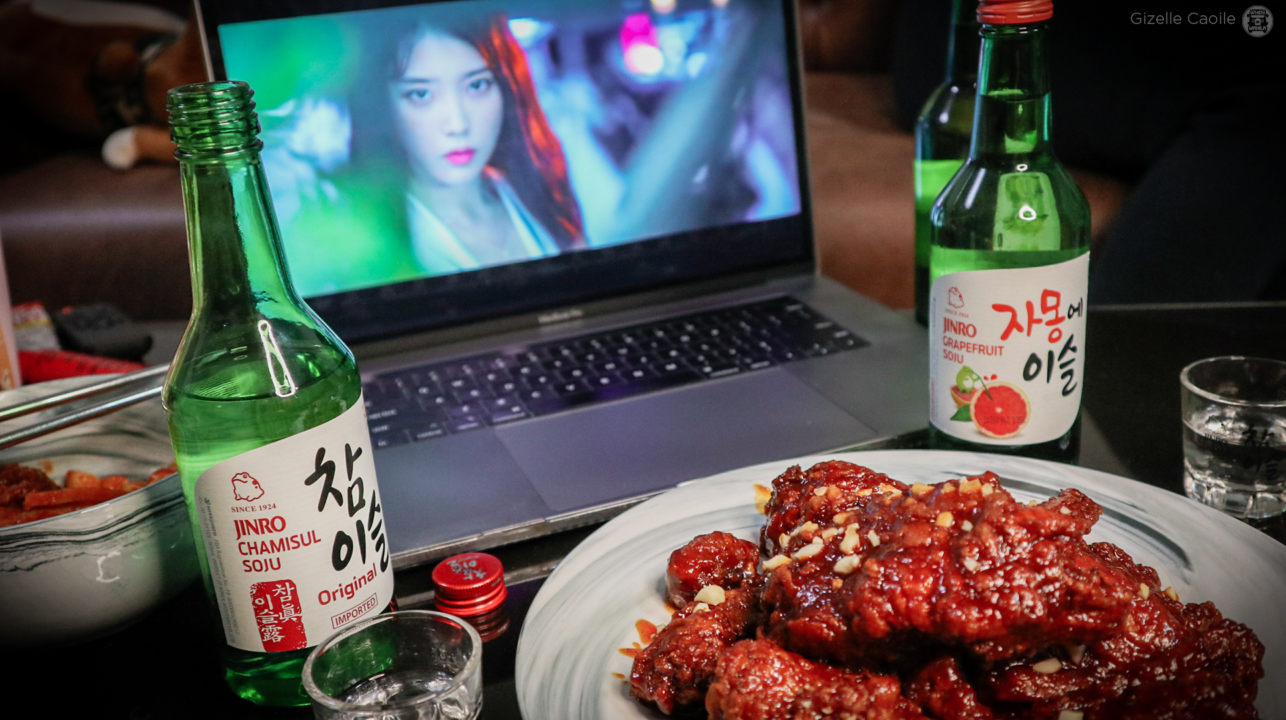
Photo by Gizelle Caoile
Authentic soju is made in Korea.
90% of soju is consumed in South Korea where it is heralded as its national drink. It’s typically meant to be enjoyed with heavy meals and spicy food like tteokbokki (spicy rice cake), samgyupsal (grilled meat), korean fried chicken, and jjigae (spicy Korean stews), and among the company of friends or co-workers–whether it’s celebrating valuable life moments or simply creating lasting memories! Since soju is made in Korea, all authentic soju is imported into the Philippines. If the soju you drink doesn’t have the BIR seal they might be considered as fakes or counterfeits.
Not all green bottles are soju.
Just because a bottle is green and looks like the familiar soju you spot in K-Dramas does not necessarily mean it is authentic soju. Green bottles are typically used by soju manufacturers to help protect the contents from sunlight and ensure the contents last longer. Because of this, green bottles have become associated with the drink through time.
Unfortunately, some counterfeits also use the same green bottle that legitimate Korean soju manufacturers use in order to pass off their product as the same. In the Philippines, many Filipinos are therefore taken advantage of as they assume that all green bottles equal to soju. This isn’t the case, though, so always make sure you are diligent in double-checking whether you are actually buying authentic soju.
Check the label.
Another useful tip is to check the label on how it is categorized. Generally speaking, if it doesn’t actually say soju, it most likely isn’t. Authentic soju is definitely labeled “soju” while counterfeits use a different categorization. As mentioned before, always examine the bottle’s label to be sure. Also, since all legit soju are using Korean characters on their label, counterfeits have taken this into account and are also masquerading with Korean characters on their label, even if the product is technically not made in Korea.
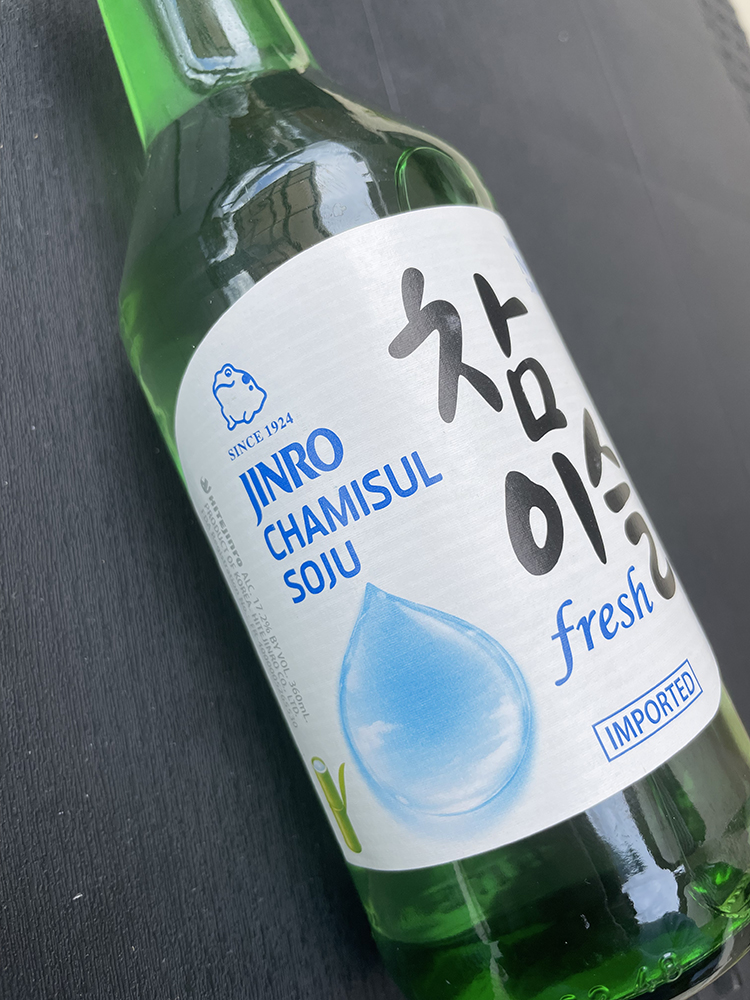
Photo by Angeline Rodriguez
Take note of the price.
Seems like you got a great deal on your bottles of soju? Remember this saying: if it’s too good to be true, it probably is. Authentic soju usually ranges from 90 pesos to 150 pesos per 360ml bottle while fake ones can be priced for as low as half of that depending on where you buy it from. So don’t fall for ridiculously cheap prices in the hopes of saving more money; you won’t be getting the same quality and you might even suffer longer hangovers because of it.
Only buy from trusted sellers and brands.
The best way to ensure that you’re buying a legit product is by purchasing from trusted sellers and brands. As a personal rule of thumb: if it’s not seen in a KDrama, it’s probably not legit Korean soju. Even better, only buy your soju from official stores and resellers of well-known Korean soju brands like Jinro.
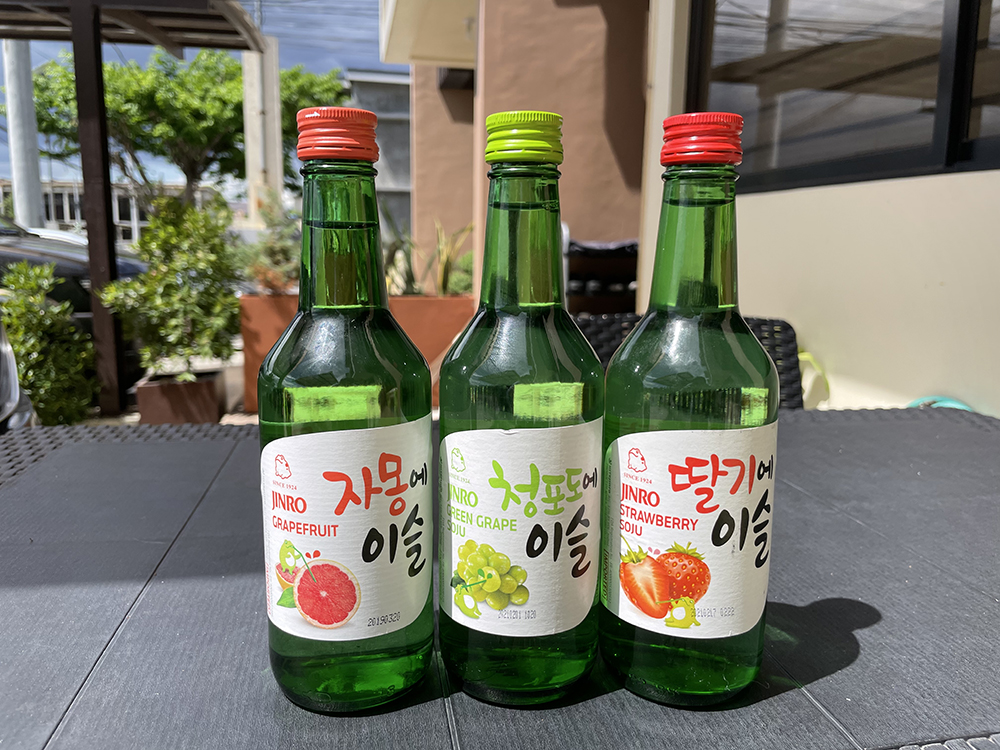
Photo by Angeline Rodriguez
Check out Jinro Soju’s official store links here: Lazada, Shopee, Booze Shop, Boozy, LiquorPH, and Clink. To stay up-to-date with new offerings and promos, follow them on Facebook and Instagram.
If you’ve become a fan of Korean culture, then soju is a must-have in your pantry or fridge for celebrations, get-togethers, inuman sessions, and even KDrama marathons. With a wide variety of flavors to choose from, you’ll definitely find at least one that you’ll keep coming back to. And remember: these moments are best experienced when you know and trust what you’re drinking.

